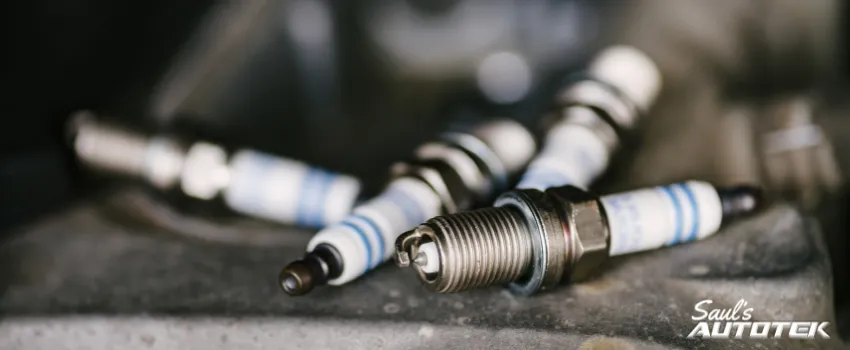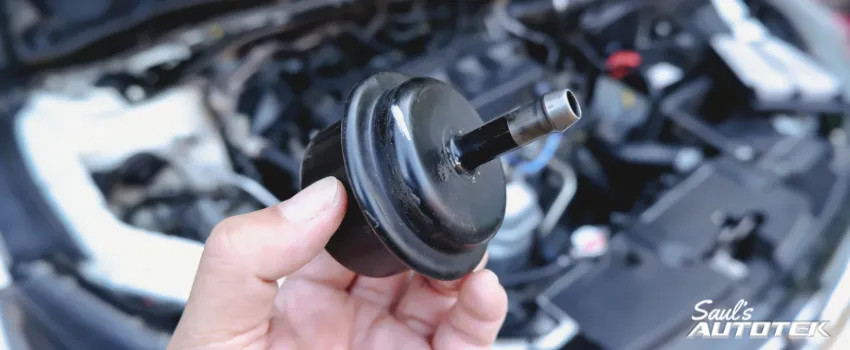Hi there. This is Saul Reisman here at Saul’s Automotive. The next component of your suspension that we are going to be looking at today is the control arm.
While this is a smaller version from an older vehicle, control arms come in many, many different shapes and sizes. The goal of this suspension component being from where it bolts onto the vehicle, where it attaches to the knuckle and where it’s allowed to pivot the suspension motion.
You’ve already seen this joint in some of our other suspension component YouTube video blogs. You know how these guys work inside. The design of this is that when your suspension is physically rotating from steering, these joints allow it to pivot back and forth. If this control arm is sticking out to either side of the vehicle, the steering knuckle will rest vertically on top of it. What this does is gives it a nice bottom center point to pivot back and forth. The weight against this is literally the weight of the vehicle because we have our strut component or our knuckle pushing straight down, which is what’s generating the rotation of the arc of this arm.
Because hitting bumps will make this arm arc upward or downward accordingly from where it’s mounted, we have to have a significant spring pressure in this area. As a result, not only does the pivot on the frame end see thousands of pound of force, and this can be where those control arm bushings are mounted, but the actual ball joint here at the end, which is the largest ball joint in your vehicle, will see constant abuse. Every time your tire hits a bump, this joint gets hit. It physically presses up and down every time, which means inside that ball and socket, we have a round ball pushing straight up, sitting in a base, and this bowl is pushing into it constantly.
That hammering effect eventually flattens the end of this joint, flattens the small part of this bowl and, as a result, reduces these surfaces. Instead of pushing up and down smoothly, we get a small gap, and that becomes that clunking and bumping you hear going over small suspension oscillating noises, like railroad tracks or speed bumps.
To help keep these joints alive longer, we do a few different things. Not only do we install Zerk fittings, like we’ve talked about earlier, we actually put a very high-temperature red, synthetic grease into these joints. Because we live here in Colorado, where temperatures can reach as low as negative 40 degrees Fahrenheit, the grease often hardens and presses out of the joints from the factory. The grease that we install is a viscous polymer, meaning it will not change volume with temperature. It will lose viscosity with temperature, just like a motor oil would, and will act slightly different in its behavior, but only in very minor characteristics. Instead of, say, a 5-40, an oil that acts two significantly different weights under two significantly different temperatures, this would be the equivalent of like a 35-40, where it does have differences in its elastic-responsiveness, but only minor differences.
What that translates to is when you start your Denver vehicle first thing in the morning on a cold day and you’re hittin’ those first few bumps, the suspension is just as smooth and responsive as when you’ve been cornering for a hundred miles of I-70. When you’re a hundred miles down I-70 and every corner’s rocking these joints back and forth, these heat up significantly. That grease that we put in there is rated to 450 degrees. That way, any damage that you can put on it, that grease can take.
Additionally, because we fill the entire volume of the joint and physically pressurize the joint with grease, in the event of a serious collision, like sliding around a corner in the snow and smacking a curb that would produce that jarring force to the joint, because it is completely enveloped in grease, Pascal’s Principle tells us that pressure will differentiate across the surface area of the joint, and instead of just crossing this half-inch diameter surface, that force is dispersed over the surface area of this joint. Literally a 20-times reduction in the force that joint feels. Now, not that we suggest you hit curbs with your car every day, but this really, really helps protect you in the event of any kind of collision.
Additionally, part of the reason that Saul’s Automotive is able to offer a lifetime guarantee on suspension components is because of this design. Let’s say you come in and you get these components installed on your vehicle ‘cause they’re worn out, and then, God forbid, a year or two down the road, you hit a curb in the snow and you actually manage to damage one of these. If you manage to damage one of these joints, we will replace it for free. Period.
In six years and 11,000 vehicles in service, we’ve installed 50,000 plus of this style of joint with this style of grease. To this day, not a single one has needed to be replaced.
If you’ve got a vehicle that sees serious service use, dirt roads, lots of back country, this is what you need. Come and see us here at Saul’s Automotive. We’d be happy to show you how we can apply these to your vehicle.
We can be reached here seven days a week at (303) 919-7769 for all of your suspension upgrade and repair needs.
Schedule Your FREE diagnostic Subaru Outback Auto Repair Upkeep and Repair Appointment
Check out Our Reviews On Yelp! And Leave A Great One For Us!
Join Our Conversation on Facebook
Explore Our Exceptional Denver Auto Repair Services
- Brake Repair Service
- Suspension Repair
- Steering Repair
- Engine Repair
- Automotive Air Conditioning and Heating Repair





